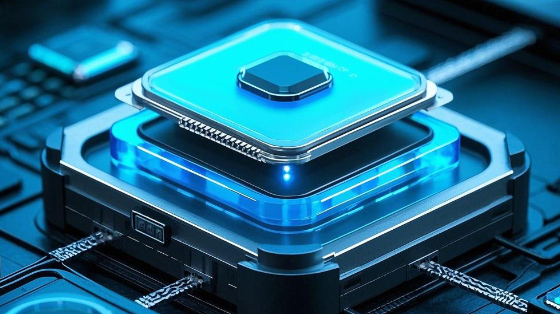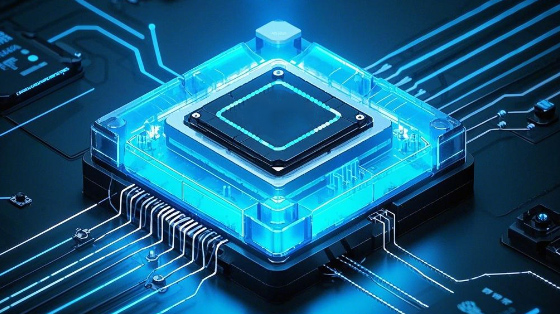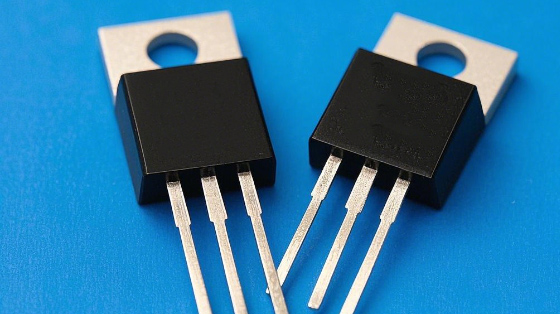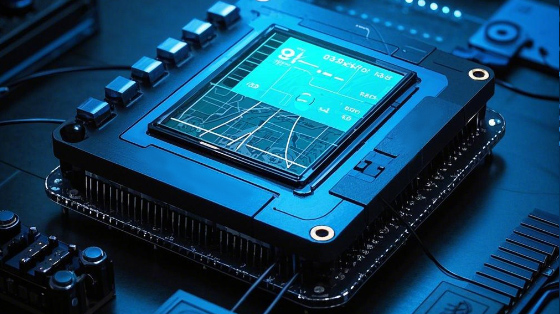The core components of data storage and information perception
In today's era of rapid digital information development, memory and sensors are like the "memory center" and "sensing antenna" of electronic devices, respectively, shouldering the important mission of data storage and information perception. The two complement each other and jointly build the infrastructure for the intelligent and automated operation of modern electronic systems. Whether it is daily digital products such as smartphones, computers, or industrial automation control systems, medical testing equipment, and smart homes, memory and sensors play an indispensable and crucial role, profoundly affecting people's lifestyles and the production and service models of various industries, and effectively promoting the progress of science and technology and the development of society.
Memory, as a storage carrier for data and information, is capable of storing various digital data for a long time, including program code, operating system, user files, images, audio, video, etc., so that it can be quickly and accurately read when electronic devices need it. The types of memory are rich and diverse, and can be divided into several categories according to factors such as storage principle, read and write speed, storage capacity, and data storage characteristics. Among them, random access memory (RAM) and read-only memory (ROM) are the most basic and widely used types. In addition, they also include a variety of storage media such as flash memory (Flash Memory), hard disk drive (HDD), solid state drive (SSD), etc., which are effective in different application scenarios.

Read-only memory (ROM), as its name suggests, under normal operating conditions, data can only be read but not written. The ROM pre-stores the basic input-output system (BIOS) programs required for the computer system to start-up, as well as some fixed system data and program code. This information is solidified and written during the manufacturing process of the device, and will not change during the entire life cycle of the device. For example, when the computer is powered on, the BIOS program is loaded from the ROM into the memory and starts to execute. It is responsible for initializing the computer hardware, detecting\ setting system parameters and a series of basic operations, which lay the foundation for the subsequent operation of the operating system to start and run. With the development of technology, ROM has also emerged in a variety of variants, such as programmable read-only memory (PROM), erasable programmable read-only memory (EPROM), and electrically erasable programmable read-only memory (EEPROM). These new ROM devices to some extent overcome the limitations of traditional ROM data can not be changed, allowing users to program or modify their stored content under specific conditions, providing possibilities for firmware upgrades and personalized settings of electronic devices.
Flash memory, as a kind of non-volatile memory, combines the advantages of faster read and write speed, larger storage capacity and long-term storage of data after power failure, and has been widely used in modern electronic devices. The working principle of flash memory is based on floating gate transistor technology, which stores data information by controlling the charge on the floating gate of the transistor. It is widely used in portable electronic devices such as smartphones, tablets, digital cameras, USB flash drives, etc., as the main storage medium for storing operating systems, applications, and user data. For example, in smartphones, flash memory not only stores the phone's operating system and various applications, but also saves a large amount of personal data such as photos taken by users, recorded videos, and downloaded music. With the continuous advancement of technology, the storage capacity of flash memory continues to increase, the speed of reading and writing is also gradually improving, and the cost is also continuously decreasing, which makes its application in more fields possible. For example, in some high-end enterprise storage systems, solid-state drives (SSDs) based on flash memory technology are gradually replacing traditional mechanical hard disk drives (HDDs) and becoming the mainstream choice for data storage. SSDs offer faster read and write speeds, lower power consumption, smaller size, and higher seismic performance than HDDs, which can significantly improve the efficiency of data storage and access in enterprise applications, such as large data centers and cloud computing platforms.
Sensors, as the "sensory organ" of electronic devices, can keenly sense changes in various physical, chemical or biomass quantities in the surrounding environment, and convert these non-electrical signals into electrical signal output, so that electronic devices can collect, analyze and process external environmental information, and then realize intelligent control and decision-making. There are many types of sensors, which can be divided into temperature sensors, pressure sensors, humidity sensors, light sensors, gas sensors, acceleration sensors, gyroscope sensors, and many other types, each of which plays a unique role in specific fields and application scenarios.
Temperature sensors are a type of sensor used to measure the temperature of an object, and their application range is extremely wide, covering almost all fields involved in temperature monitoring and control. In industrial production, temperature sensors are widely used in temperature monitoring of various industrial equipment and production processes, such as steel smelting, chemical reactions, and power generation. For example, in the steel smelting process, the temperature in a high-temperature furnace needs to be precisely controlled. Temperature sensors monitor the temperature in the furnace in real time and feed the temperature data back to the control system. The control system adjusts the heating power or fuel supply according to the set temperature curve to ensure the smooth progress of the steel smelting process and the stability of product quality. In daily life, temperature sensors are also ubiquitous, such as air conditioners, refrigerators, water heaters and other household appliances are built-in temperature sensors, which are used to sense changes in ambient temperature or internal temperature of the device, so as to achieve automatic temperature control function and provide users with a comfortable experience. The working principle of temperature sensors is based on a variety of physical effects, such as thermistor effect, thermocouple effect, thermistor effect, etc. Thermistor temperature sensors use the resistance value of metal materials to change with temperature to measure temperature; thermocouple temperature sensors use the relationship between the thermal potential difference of two different metal materials and temperature to measure temperature; thermistor temperature sensors use the sensitivity of the resistance value of semiconductor materials to temperature to achieve temperature detection.
Pressure sensors are mainly used to measure the pressure, and have crucial applications in many fields such as industrial automation, automotive electronics, aerospace, and medical equipment. In the field of industrial automation, pressure sensors are widely used in hydraulic systems, pneumatic systems, and pipeline pressure monitoring. For example, in hydraulic machinery, pressure sensors monitor the pressure of hydraulic oil in real time to ensure that the system pressure is within the normal range. Once the pressure fluctuates abnormally, the control system will take timely measures to adjust or alarm to prevent equipment damage or safety accidents. In the field of automotive electronics, pressure sensors are used in tire pressure monitoring systems (TPMS) to monitor the air pressure in tires in real time and transmit the air pressure information to the on-board computer. When the tire pressure is too low or too high, the on-board computer will promptly alert the driver to perform tire inflation or deflation operations to ensure driving safety. The working principle of pressure sensors mainly includes piezoresistive, capacitive, and piezoelectric. Piezoresistive pressure sensors use the piezoresistive effect of semiconductor materials. When pressure is applied to the sensitive components of the sensor, its resistance value will change, and the pressure value can be obtained by measuring the change of resistance value. Capacitive pressure sensors measure pressure based on the principle that the distance or area between the capacitive plates is changed due to pressure changes, resulting in changes in capacitance value. Piezoelectric pressure sensors use the piezoelectric effect of certain crystalline materials. When subjected to pressure, a charge is generated on the crystal surface, and the pressure is determined by measuring the size of the charge.
With the vigorous development of emerging technologies such as the Internet of Things, big data, and artificial intelligence, memory and sensors have also ushered in new development opportunities and challenges. In the era of the Internet of Things, a large number of devices need to be connected to the Internet and interact with data, which puts forward higher requirements for memory storage capacity, read and write speed, and data security. At the same time, sensors, as the core components of the "sensing layer" of the Internet of Things, need to have higher accuracy, lower power consumption, smaller size, and stronger anti-interference capabilities in order to accurately collect various data information in complex and changing environments. For example, in a smart home system, various sensors are distributed in every corner of the house, collecting information such as temperature, humidity, lighting, air quality, and personnel activities in real time, and storing this data in local or cloud storage. By analyzing and processing these data, smart home systems can realize a series of intelligent functions such as intelligent lighting control, air conditioning automatic adjustment, and security monitoring, providing users with a more convenient, comfortable, and safe living environment. In the field of industrial Internet of Things, sensor networks are widely used in the monitoring and management of factory automation production lines. A large number of sensors are installed on production equipment to monitor the operating status of equipment, process parameters, and other information in real time, and transmit this data to the data center for storage and analysis. Through in-depth mining and analysis of production data, enterprises can achieve intelligent management such as optimal control of the production process, fault prediction and diagnosis, quality inspection and traceability, and improve production efficiency, reduce production costs, and improve product quality.
In the field of big data and artificial intelligence, memory provides a basic guarantee for the storage of massive data, while sensors provide a rich source of data for artificial intelligence systems. Artificial intelligence algorithms require a large amount of data for training and learning to improve their intelligent decision-making and prediction capabilities. For example, in applications such as image recognition, automatic speech recognition, and autonomous driving, it is necessary to collect a large amount of data such as image, voice, and environmental information through various sensors, and store these data in large-scale storage systems. Artificial intelligence systems continuously optimize their models and algorithms through the analysis and learning of these data, so as to achieve accurate recognition of images, speech, and intelligent decision-making and control of autonomous driving scenarios. However, with the sharp increase in data volume and the continuous improvement of data processing speed requirements, traditional memory and sensor technologies are also facing tremendous pressure. Therefore, the development of new high-speed, large-capacity, low-power memory and high-precision, high-sensitivity, and intelligent sensors has become a research hotspot and key development direction in the field of electronic components.
To sum up, memory and sensors, as the core components of data storage and information perception, play an extremely important role in the development of modern electronic technology and information technology. Their continuous innovation and development not only promote the intelligent and automated upgrading of electronic equipment, but also lay a solid foundation for the rise and wide application of emerging technologies such as the Internet of Things, big data, and artificial intelligence, profoundly changing people's lifestyles and social development models, leading humanity to a more intelligent, convenient, and efficient new era of science and technology.





